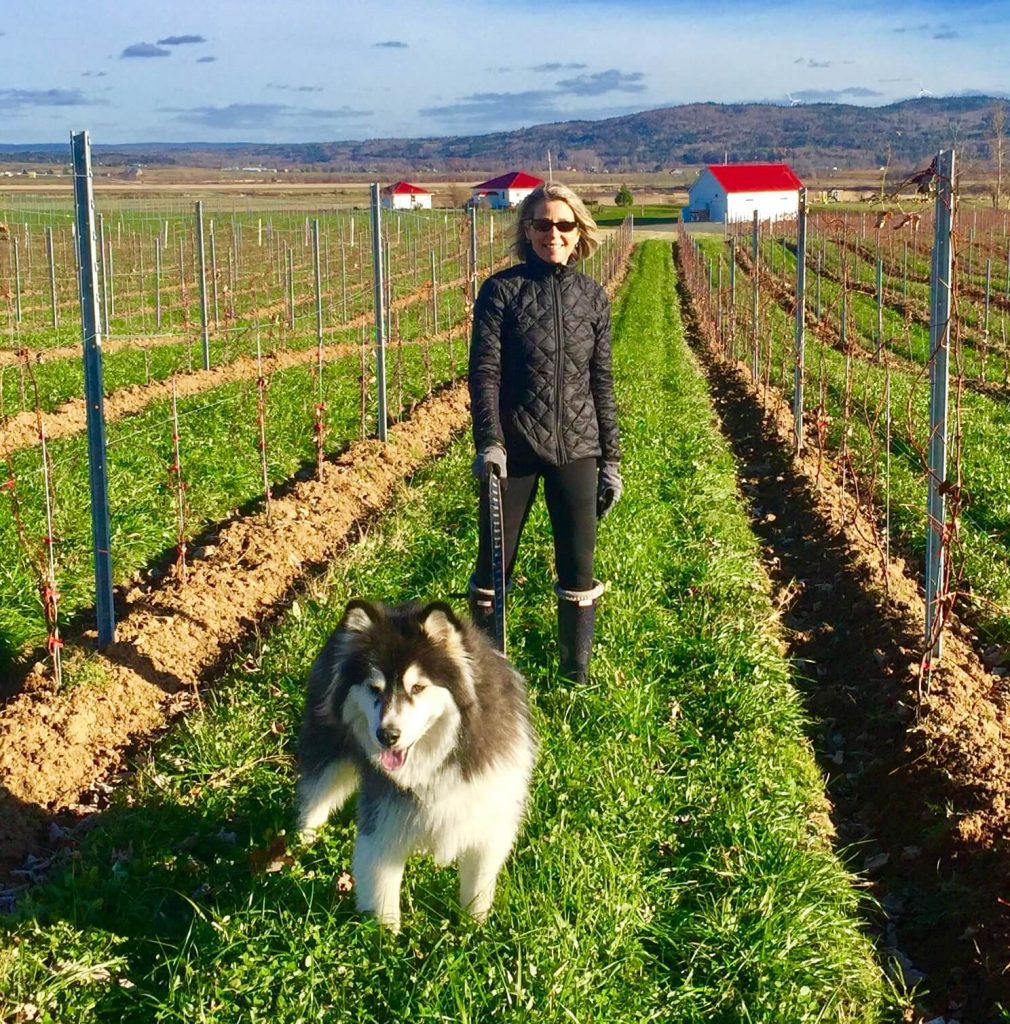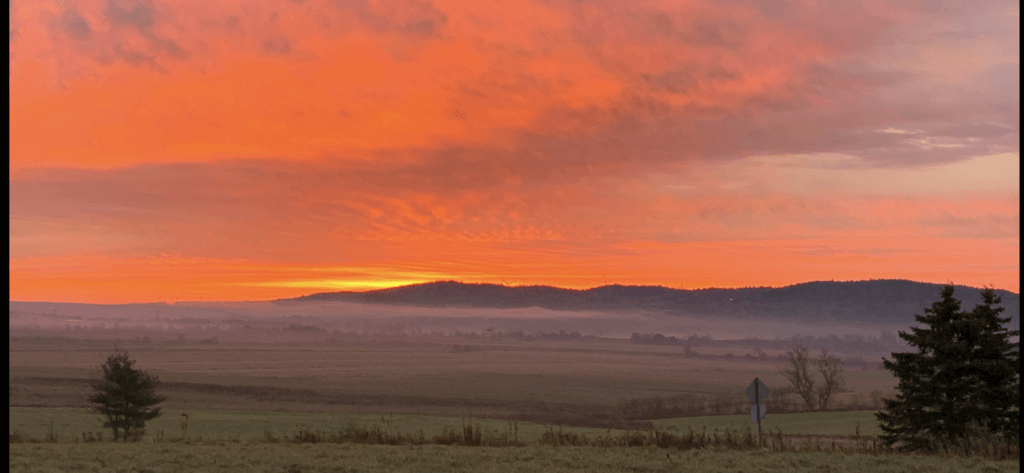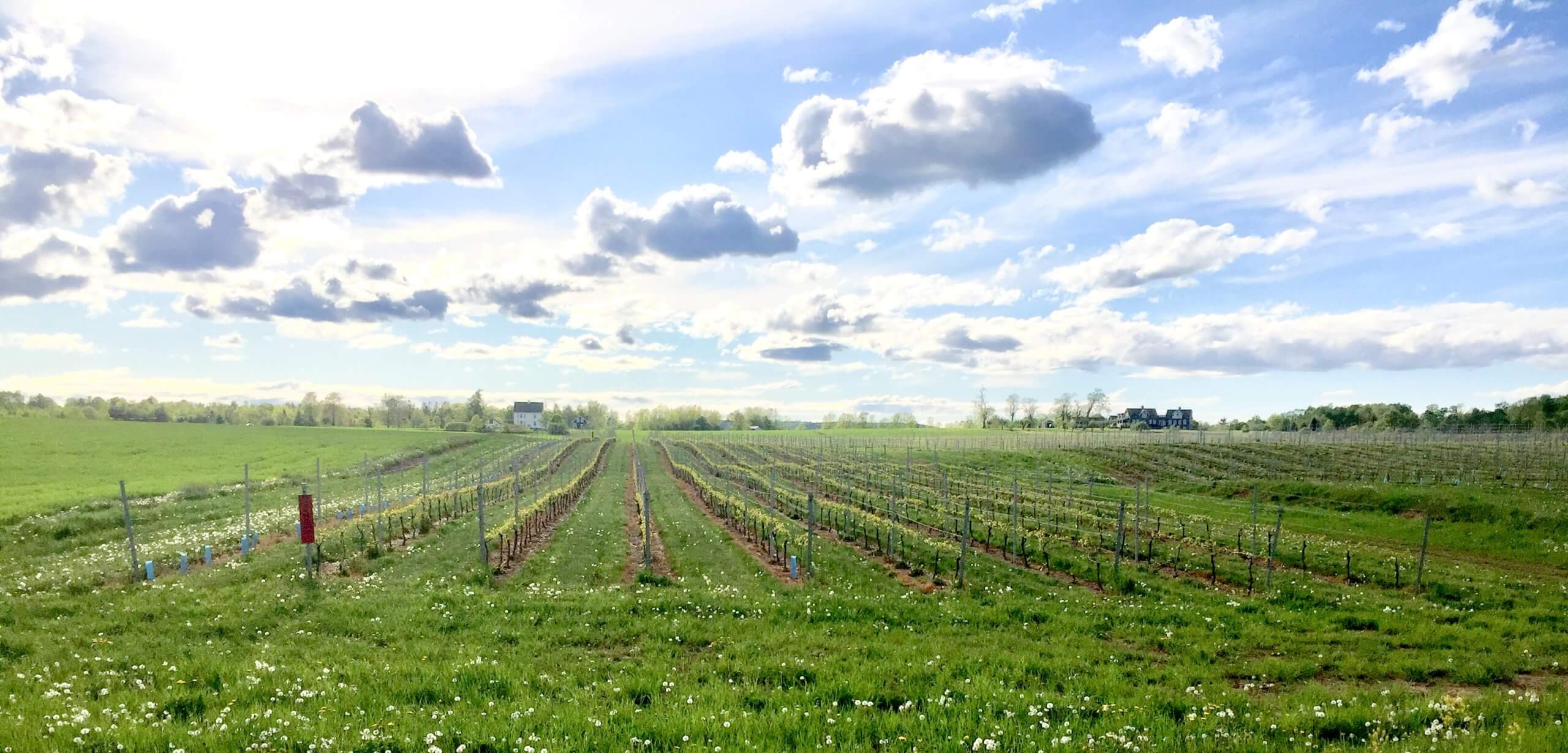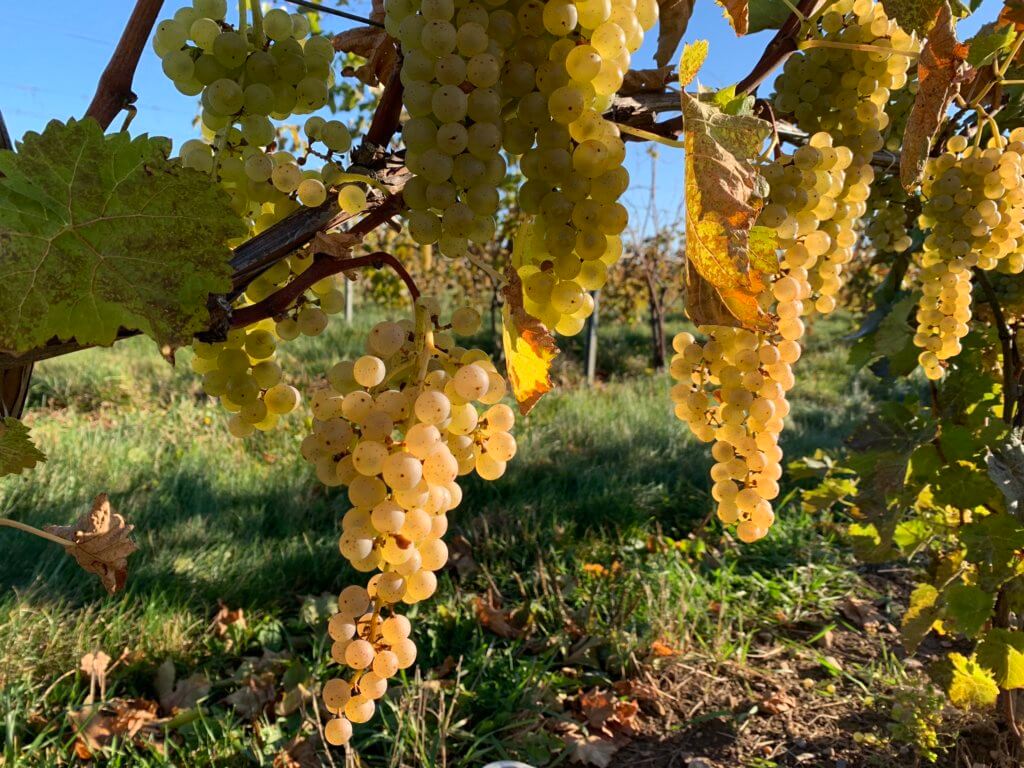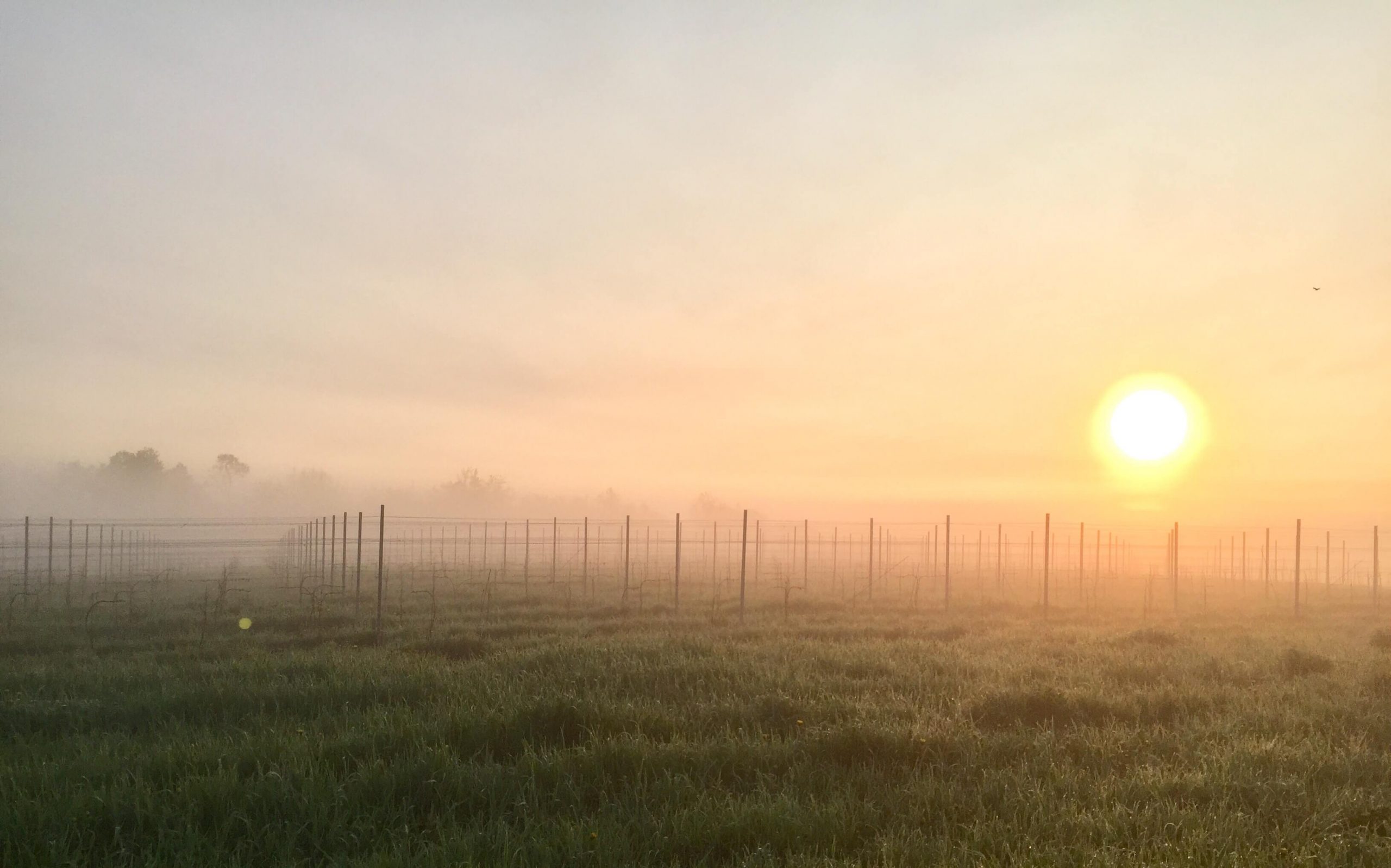Overveiw
2016 was a great year for growing grapes. It was dry with the occasional light rain which limited fungal diseases of the vines and grapes and resulted in smaller grapes but more concentrated flavors. Fall stretched on into November without a hard frost so the grapes had extra time to ripen. the weather was not quite so good for new vines like those at Johnston Vineyards. Two year old bareroot vines planted this year needed more rain to get established. I believe the blue grow tubes helped with hydration by attracting moisture inside the tubes in the early morning. The bareroot vines planted last year didn’t seem to suffer from the drought and developed nicely. The Marquette were allowed to bare fruit (albeit thinned clusters) to restrict vine growth, which it did. All the other varieties had their fruit removed early in the season to encourage vine growth.
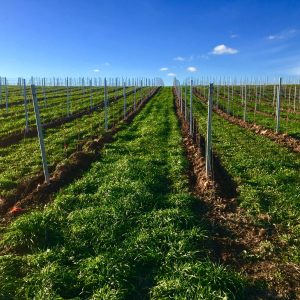
Establishing a Cover Crop
Last year the rows were repeatedly harrowed and ripped after planting the vines. A cover crop was then planted in each row. A much more efficient and effective method of establishing the cover crop was used for the middle section planted with vines this year. The entire field was ploughed, harrowed and levelled. It was ripped and rocks removed. Lime and manure were applied and the entire field was seeded with clover, rye and peas. The vines were then planted after the seed germinated. The rows left by the planter disrupted seed growth. Subsequent undervine growth was killed with Ignite which was applied once in July and once in August (all vines were covered with grow tubes until September 1). Extensive pig weed growth was mowed for control. A cover crop of lush rye grass developed by September. it is not clear what the best method of managing the cover crop will be in subsequent years. It seems logical that ploughing under the cover over the years returns nutrients to the soil. Selective ripping will loosen soil compacted by tractor work. If it is done on alternative rows the vines can still be worked in wet, muddy conditions. What I need to determine is what crops should be planted and how often.
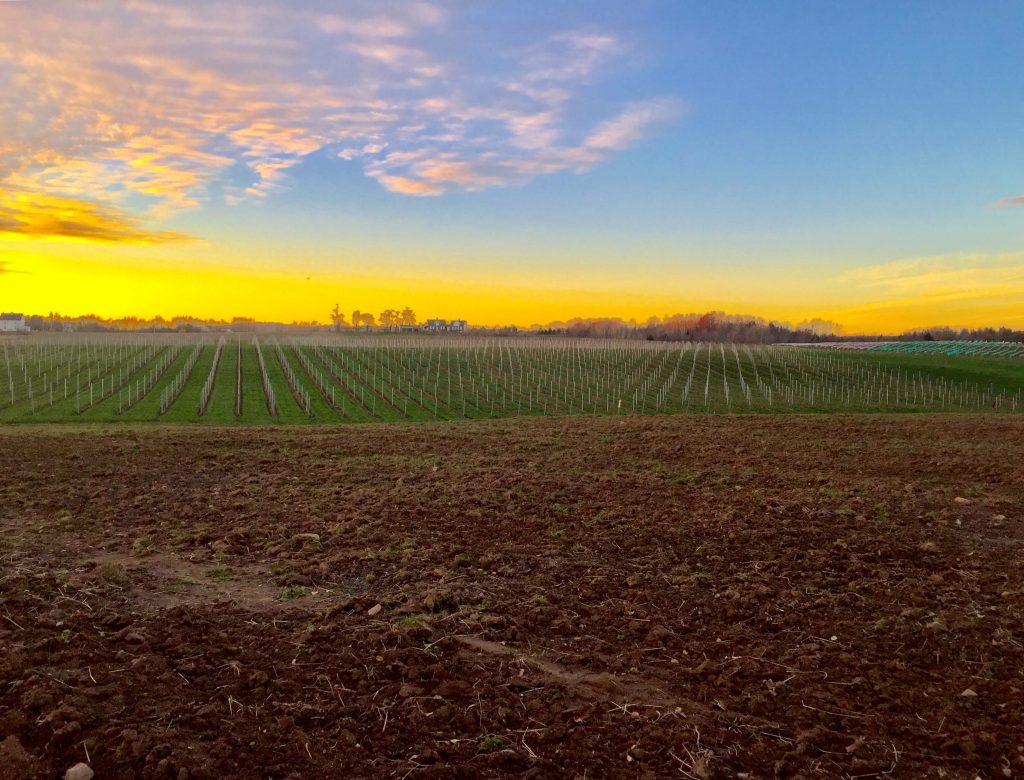
Weed control
Weed control was successfully accomplished with the dual sided Clemens grape hoe. Some touch up with Ignite will likely be needed around the posts and trunks in future. All vines were hilled up to protect the graft site and to enhance weed control in the spring. Traditionally this procedure is limited to vinifera vines which are more susceptible to winter damage.
Soil analysis
PH is the most important soil value to monitor. Most Nova Scotia soil is acidic. The original Johnston Vineyard’s land had not been limed in living memory and pH was in the low 5’s in 2014 before any soil amendments. For example in the NW corner pH was 5.07 in September 2014. Soil with a pH below 5.5 uses 30% of nutrients. In October 2015 it was 5.48 after 2 doses of lime; in October 2016 it was 6.11 after 1 additional dose of lime. The application rate was 3 tons/acre. Three tons is the maximum amount that should be applied at one time. If it is harrowed in 6 tons can be spread since it won’t wash away as easily. A rule of thumb is that one ton will raise the pH by .1. Copper was highest (20.45) in the upper portion of the vineyard where an old apple orchard was located. In the mid and lower section it was in the 3 range which is in the high normal range. Help with the interpretation of the soil report is available from the Nova Scotia Department of Agriculture (Soil analysis interpretation). In 2017, when the vines have been in the ground 3 years, tissue samples will be taken to confirm that the soil analysis accurately represents plant uptake.
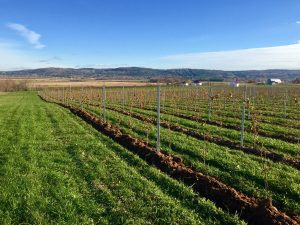
Planning for Next Year
Bareroot vines need to be ordered 2 years in advance to ensure that you get the clone and root stock that you want. Petite Milo on 3309 root stock, Chardonnay 548/101-14, Pinot Noir 667/101-14 and Pinot 828/101-14 have been ordered for delivery next spring. These vinifera vines will be planted in the lowest part of the vineyard which will increase the risk of frost damage.
The Vineyard Development and Expansion Program application from the Growing Forward 2 federal-provincial initiative was accepted with reimbursement over 2 years. The program is scheduled to end in 2019 or when the money runs out. The home grown success program continues to run and provides a maximum of 12500$ for certain vineyard activities.
Work will continue on the use of the grape hoe and attachments that was partially funded by a Nova Scotia Farm Innovation grant. The goal was to contribute to sustainable farming by using multiple devices in tandem in the vineyard. A plan needs to be formulated to combine weeding with the grape hoe with crop cover management. The goal is to enhance the soil while limiting tractor compaction and fuel usage.
